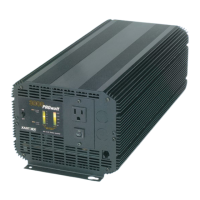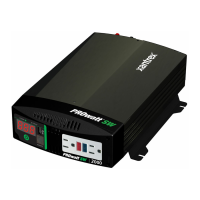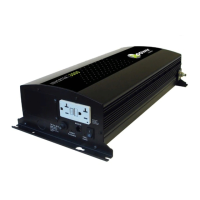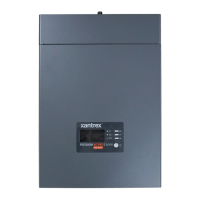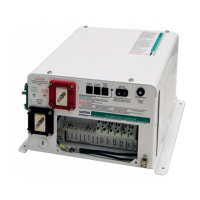PROSINE 2.0 INVERTER•CHARGER USER’S MANUAL
118
445-0089-01-01
Series–Parallel and “Cross-Tied” Connections
As the name series–parallel implies, both the series and parallel techniques are
used in combination. The result is an increase in both the voltage and the
capacity of the total battery bank. Cross-tying is used frequently to make a
larger, higher voltage battery bank out of several smaller, lower voltage
batteries. This is common with all battery-inverter system voltages. The
smaller, lower voltage batteries are first connected in series to obtain the
needed voltage, and then these “batteries connected in series” sets are
connected in parallel to increase the battery bank capacity.
The best arrangement when using a series–parallel configuration is to connect
all the smaller, lower voltage batteries in parallel, and then to connect all these
“batteries in parallel” into series sets to obtain the needed voltage. This
configuration is often called “cross-tying.” It is less convenient and requires
additional cables but reduces imbalances in the battery, can improve overall
performance, and in a “shorted cell” scenario, will cause only the battery(s)
that are actually in parallel with the “shorted” battery to discharge. This will
allow you to reconfigure your battery bank with the other batteries that are in
parallel with the shorted/discharged battery(s) and still be operational (only at
a lower capacity).
The more effective cross-tying method is shown by the dashed line. If you
don’t want to cross-tie, ignore the dashed line.
Figure 26 Series–Parallel and Cross-Tied Connections

